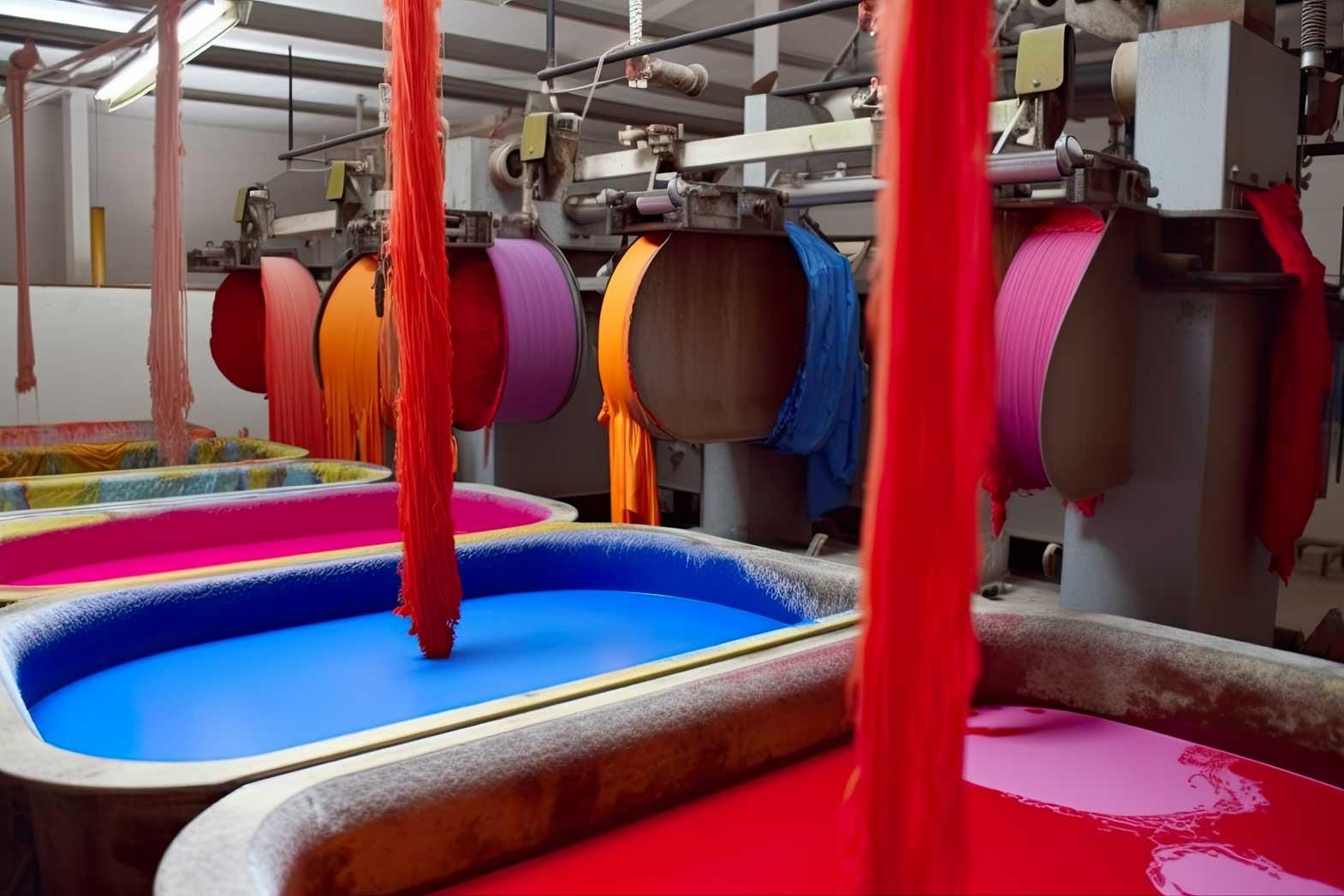Thedyeing and finishing processes in the textile industry have garnered a lot ofattention lately because of the emerging concept of sustainability andeco-friendly textiles and garments. Due to the toxicity of the dyes andchemicals used in textiles and inappropriate discharge of such waste has led toskin diseases and respiratory problems among many workers. This has given animpetus to the rising demand for producing textile products through environmentfriendly and sustainable dyes and processes.
Tillthe midst of nineteenth century all the dyes used for textile products wereprocured naturally, until the invention of mauvine in 1856 by Perkin. Sincethen there has been no looking back in the production of synthetic dyes becausethey were affordable, available in a lot of different colors, goodcolor-fastness, and most of all were easy to produce. The textile industry isaccountable for using and producing 1.3 million tons of dyes and pigments, mostof which are made synthetically.
Textiledyeing and finishing in a green way can be achieved by using chemical-free dyesand using kin to environment processes. Using natural dyes made from plants,marine invertebrates (like sea urchins and starfish), algae, bacteria, andfungi. This has also led to the development of Herbal dyes, that are not justbio-degradable but also posses' medicinal properties. Plants, fruits, barks,stems, minerals, and herbs are used to make fabrics with anti-bacterial,anti-inflammatory, and anti- allergic fabrics.
However,retaining color fastness and obtaining certain shades can be difficult. Thefollowing are a few other dyes and pigments used to reduce the consumption ofwater and keep the environment from polluting to a minimum.
Fibre-reactivedyes are dyes that bond to the fibre due to a chemical reaction with fabricslike cotton, rayon, and soy. Coloring using these dyes does not requiremordants.
Alsofibre-reactive dyes use les salt, heavy metals, and water than normal dyeingagents.
Likethe name suggests, bio-degradable dyes, do not require using heavy metals,amines, and inorganic salts. Hence they easily get decomposed without leavingany landfill in the environment.
Azo-free dyes are also being used in the textile industries which are free of nitrogen based compounds that release aromatic amines. Similarly, dyes free of heavy metals which contain toxic and carcinogenic substances are used to develop sustainable and eco-friendly fabrics.
The following are some dyeing processes that are pro environment and use harmless substances:
Ink-jet printing is a process where the dyes and pigments are applied directly to the fabric. This printing technique does not make use of large amount of water for treatment and power consumption.
Eco-bleaching with non-chlorine substances like hydrogen peroxide can whiten fabrics without releasing any harmful chemicals in the process. The hydrogen peroxide when breaks down naturally when it comes in contact with oxygen and water turn the cloth white. A popular green bleaching procedure uses silicates and natural phosphates which when used along with cow dung and exposed to sun bleaches natural fabrics. Low temperature bleaching processes using peroxide activators control its decomposition and simultaneously begin developing the required whiteness. The method does not involve the use of methane gas and thus reduces the emission of carbon dioxide up to 50 percent.
Post treatments of waste water are being adapted by several garment and textile manufacturing units. Re-using the dye bath water can help save tons of water without fixing the color of one bath to another one's fabric. Cold dying, dry heat fixation, and vegetable tanning are some other processes that textile manufacturers and dyeing houses use to develop eco-friendly garments and fabrics.
Using plasma technology for foam finishing in textiles is an innovative solution for developing fabrics with stain repellant, hydrophobic, and moisture management properties. The technique utilizes foaming machines that folds air into concentrated chemical solution and then dilutes it. The process ensures chemical penetration at optimum level without using large quantities of water. This is a productive, energy saving, and nature loving method.
Another unique method that supports environment stewardship in textile finishing uses enzymes instead of chemical additives to reduce the emission of carbon dioxide and ultimately reduces energy consumption. Dyeing fabrics with special enzymes solution reduces the requirement of singeing. Moreover, washing especially knitted fabrics with enzymes can also help remove excess dye. Such processes are said to save 1000 kilos of carbon dioxide emission per ton of knitted fabric and 70,000 litres of water.
The textile industry around the world is accountable for discharging 40,000 to 50,000 tons of dye in the water bodies. This has raised concerns and subsequently led to the adherence of strict rules and standards to protect the environment and practice sustainable working. Hence adopting eco-friendly methods and bio-degradable substances for dyeing and finishing processes in textile and garment making can save resources of the nature and reduce chemical landfill in a big way.
References:
1. Indiantextilejournal.com
2. Environmentaljournal.org
3. Cottonsrevolution.org
Image Courtesy:
1. Greenbyusa.com









Comments